Do you religiously slather on sunscreen every day, thinking you're doing your skin a huge favor? Think again. Improper sunscreen application is incredibly common, leaving many people with a false sense of protection against the sun's harmful UV rays. Sunburns, premature aging, and even skin cancer can still strike if you're not using sunscreen correctly. It's time to quit sabotaging your sun protection efforts!
In this comprehensive guide, we'll expose the most prevalent sunscreen mistakes and provide you with a foolproof plan to make the most of this skincare superhero. Get ready to revamp your sun-smart habits and enjoy superior defense against sun damage.
The Sunscreen Quantity Conundrum
One of the biggest sunscreen snafus is under-application. Many people think a thin,streaky layer is sufficient, but this mindset couldn't be more misguided. Dermatologists recommend applying the equivalent of a shot glass full (around 1 ounce or 30ml) of sunscreen to cover the entire body. Shocking, right?
Here's the lowdown: sunscreens work by forming a thin protective barrier on the skin's surface. If the layer is too sparse, UV radiation can sneak through the porous defenses and wreak havoc on your skin cells. Achieving proper coverage requires a generous, saturated application from head to toe.
Furthermore, don't fall into the "spray-and-go" trap with aerosol sunscreens. While convenient, these mists often lead to missing spots and inconsistent coverage. Take the time to thoroughly rub in spray sunscreens using a firm massaging motion.
Reapplication 101: Don't Be Stingy
Another cardinal sin in the sunscreen arena is the failure to reapply. Many people mistakenly believe that a single application in the morning provides impenetrable protection for the entire day. However, this approach is deeply flawed and can have severe consequences for your skin's well-being.
Sunscreens are designed to be water-resistant, not waterproof or sweatproof. Activities like swimming, exercising, or simply sweating can compromise the sunscreen's integrity, creating opportunities for UV penetration. Even if you're staying dry, sunscreen can be inadvertently removed through activities like towel drying, clothing friction, and makeup application.
The solution? Reapply your sunscreen liberally and frequently – at least every two hours when outdoors, and immediately after swimming, excessive sweating, or towel drying. This simple step can mean the difference between a sunburn and flawless protection.
Don't Disregard High-Risk Areas
When applying sunscreen, many people concentrate on easily accessible areas like the arms, legs, and face while neglecting more inconspicuous spots. This oversight can leave certain regions vulnerable, increasing your risk of sun damage and potentially skin cancer.
Be diligent about covering often-missed zones like the ears, scalp (for those with thinning hair or parts), lips, back of the neck, tops of the feet, and behind the knees. These areas are just as susceptible to UV exposure as the rest of your body.
Additionally, pay special attention to mole-dotted areas and scars, as these sites are more photosensitive and prone to irregular pigmentation or growths when subjected to excessive UV radiation.
SPF Myths: Know Your Numbers
SPF (Sun Protection Factor) is a measure of a sunscreen's ability to prevent sunburn from UVB rays. However, many consumers misunderstand the true implications of this crucial metric, leading to false assumptions and improper usage.
First, let's debunk the myth that higher SPF values provide exponentially greater protection. An SPF 30 sunscreen blocks approximately 97% of UVB rays, while an SPF 50 product blocks around 98%. Contrary to popular belief, an SPF 100 sunscreen is not twice as effective as SPF 50 – the difference in protection is marginal.
Moreover, no sunscreen can block 100% of UV rays, regardless of the SPF value. This means that even when using high SPF sunscreens, some UV exposure is inevitable, necessitating reapplication and limiting time in direct sunlight during peak hours.
UVA Protection: The Unsung Hero
While most people are familiar with the sunburn-inducing effects of UVB rays, fewer understand the equally crucial role of UVA protection. These deeply penetrating rays are primarily responsible for premature skin aging, wrinkles, age spots, and potentially skin cancer.
Unfortunately, the SPF rating on sunscreen labels only reflects UVB protection, leaving many consumers unaware of a product's UVA shielding capabilities. To ensure comprehensive defense, always opt for "broad-spectrum" sunscreens that guard against both UVB and UVA radiation.
Better yet, seek out sunscreens with added UVA-blocking ingredients like zinc oxide, avobenzone, or ecamsule. These formulations provide an extra layer of security against the insidious effects of UVA rays.
Don't Be Fooled by Clouds or Shade
One of the most dangerous sunscreen misconceptions is the belief that UV exposure is minimal on cloudy days or when seeking shade. This false sense of security can lead to sunburn and long-term skin damage.
Clouds are no match for UV rays – up to 80% of radiation can penetrate cloud cover, even on seemingly overcast days. Additionally, surfaces like sand, water, and concrete can reflect and intensify UV exposure, increasing your risk even in shaded areas.
To stay truly sun-safe, apply sunscreen rain or shine, and don't rely solely on shade for protection. Seek additional barriers like UV-blocking clothing, hats, and umbrellas when spending extended periods outdoors.
Expiration Dates: Use It or Lose It
Like all skincare products, sunscreens have a finite shelf life, after which their efficacy can diminish significantly. Using expired sunscreen is akin to not wearing any protection at all – a surefire recipe for sunburn and sun damage.
Most sunscreens are formulated to retain their potency for 2-3 years from the manufacturing date. However, exposure to extreme temperatures or direct sunlight can accelerate the degradation process, reducing their lifespan even further.
To maximize your sunscreen's protective power, check the expiration date before each use and promptly discard any expired or visibly separated products. It's a small price to pay for optimal defense against UV radiation.
Sunscreen Saboteurs: Ingredients to Avoid
While sunscreens are designed to protect, certain ingredients can undermine their effectiveness or potentially harm your health. Knowledge is power, so familiarize yourself with these sunscreen saboteurs:
Oxybenzone and Avobenzone: These common UV filters are potential hormone disruptors and have been linked to issues like low birth weight in newborns and reproductive toxicity.
Parabens: These synthetic preservatives have been detected in human breast cancer tissue and may contribute to hormone imbalances.
Retinyl Palmitate: When exposed to sunlight, this vitamin A derivative may increase the formation of potentially carcinogenic free radicals.
Instead, opt for sunscreens formulated with physical UV blockers like zinc oxide and titanium dioxide, which sit on the skin's surface without being absorbed.
Conclusion: Reclaim Your Sun-Smart Prowess
Proper sunscreen application isn't rocket science, but it does require commitment and diligence. By addressing the most common mistakes outlined in this guide, you can reclaim your sun-smart prowess and enjoy superior protection against the perils of UV radiation.
Remember, sunscreen is your first line of defense against sunburn, premature aging, and skin cancer. Don't let improper usage undermine its superpowers. Embrace generous application, frequent reapplication, broad-spectrum coverage, and safer ingredients – your skin will thank you for decades to come.
So, what are you waiting for? Ditch those sunscreen sabotagi-g habits and basks in the confidence of truly effective sun protection. Your future, radiant self will be eternally grateful. https://youneekproscience.com/products/sunscreen-cream-spf-50-pa-new



Share:
Japanese Camellia: The Youneek Pro Science Advantage
Know Your Skin Type: Essential Insights for Selecting the Right Skincare Products